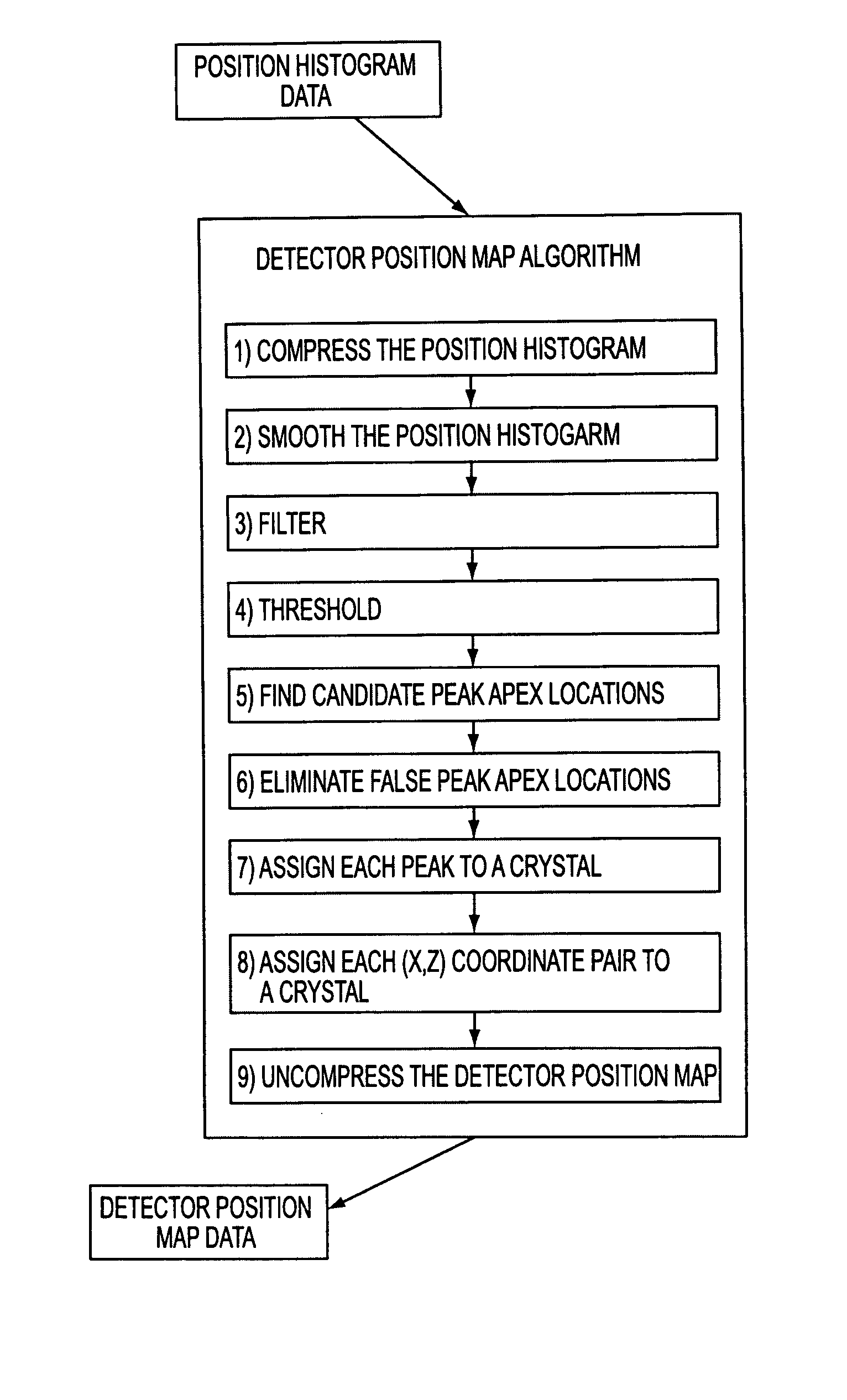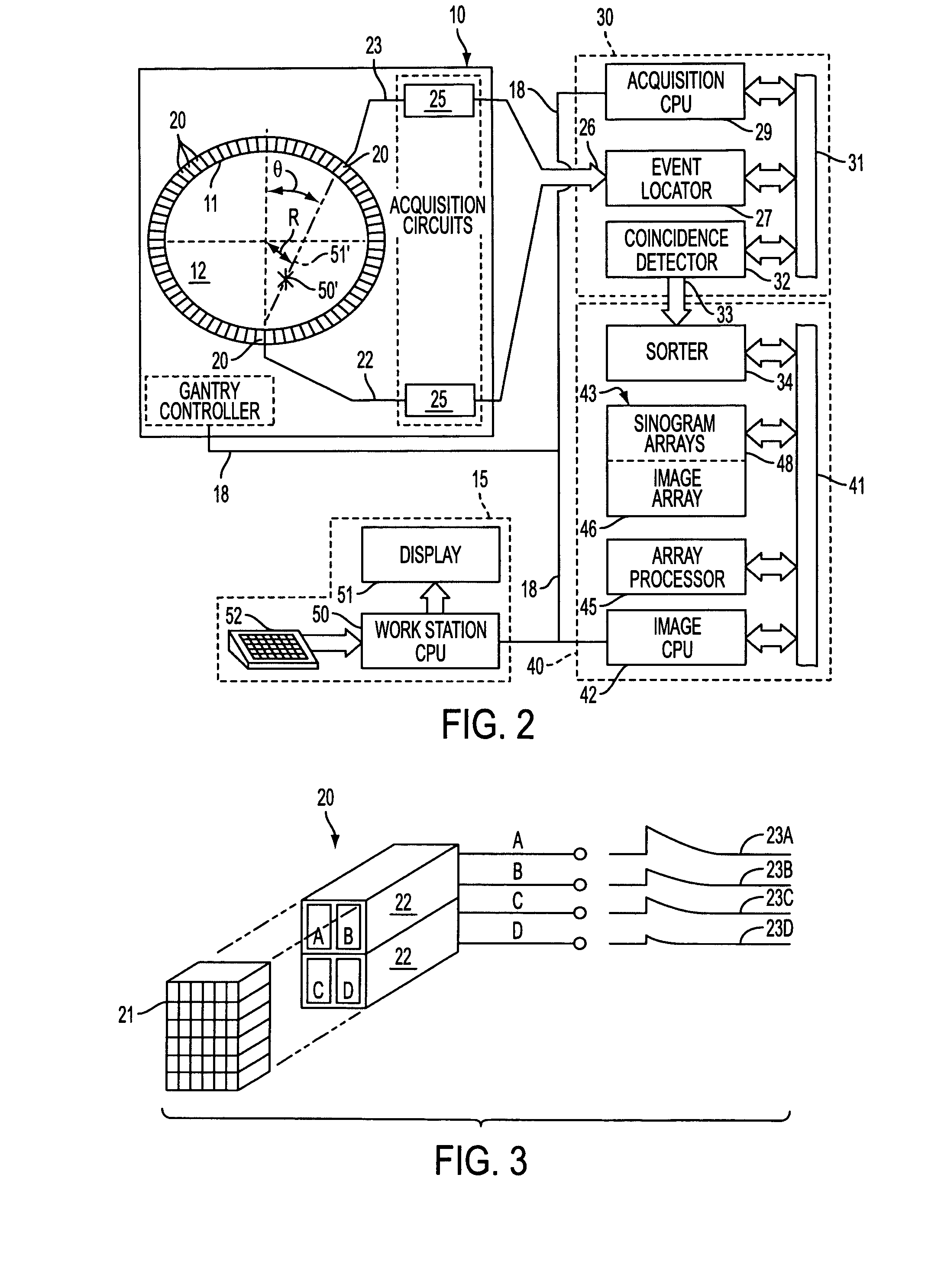System and method for producing a detector position map
a detector position and position map technology, applied in the field of imaging devices, can solve the problem that the simple mapping scheme is generally not accura
- Summary
- Abstract
- Description
- Claims
- Application Information
AI Technical Summary
Problems solved by technology
Method used
Image
Examples
Embodiment Construction
The operation of a PET scanner will be described, followed by a description of the generation of the detector position map used by the scanner to map events to a particular detector in the array.
FIG. 1 illustrates an example of a PET scanner 1 which includes a gantry 10 supporting a detector ring assembly 11 about a central opening or bore 12. The detector ring assembly 11 is circular in shape and is made up of multiple detector rings (not shown) that are spaced along a central axis 2 to form a cylindrical detector ring assembly. According to one embodiment, the detector ring assembly 11 includes 24 detector rings spaced along the central axis 2. A patient table 13 is positioned in front of the gantry 10 and is aligned with the central axis 2 of the detector ring assembly 11. A patient table controller (not shown) moves the table bed 14 into the bore 12 in response to commands received from an operator work station 15 through a serial communications link 16. A gantry controller 17...
PUM
 Login to View More
Login to View More Abstract
Description
Claims
Application Information
 Login to View More
Login to View More - R&D
- Intellectual Property
- Life Sciences
- Materials
- Tech Scout
- Unparalleled Data Quality
- Higher Quality Content
- 60% Fewer Hallucinations
Browse by: Latest US Patents, China's latest patents, Technical Efficacy Thesaurus, Application Domain, Technology Topic, Popular Technical Reports.
© 2025 PatSnap. All rights reserved.Legal|Privacy policy|Modern Slavery Act Transparency Statement|Sitemap|About US| Contact US: help@patsnap.com



